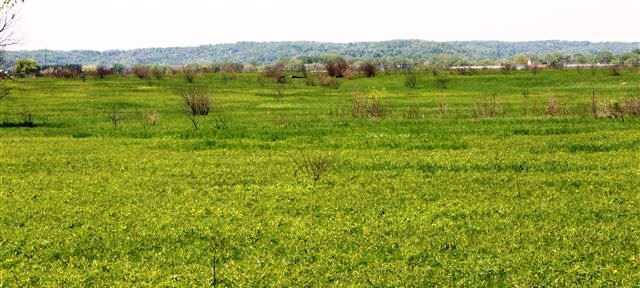 The 2016 field season is shaping up to be a busy year on the Ho-Chunk Nation lands at the former Badger Army Ammunition Plant. Activities planned include continuing to monitor and inventory wildlife and forestry resources; invasive species management; and removal of unwanted infrastructure, according to a recent update from the tribe.
The 2016 field season is shaping up to be a busy year on the Ho-Chunk Nation lands at the former Badger Army Ammunition Plant. Activities planned include continuing to monitor and inventory wildlife and forestry resources; invasive species management; and removal of unwanted infrastructure, according to a recent update from the tribe.
The Nation will continue efforts that began in 2015 to inventory and monitor wildlife. A variety of methods are being used including acoustic recording devices for various species, trail cameras and physical surveys. The Nation and WDNR staff recently completed winter bat hibernacula surveys for sites located on tribal lands at Badger and will be working together to improve other potential hibernacula sites. Improvements include removing woody vegetation in certain areas to create travel corridors to a suitable hibernaculum site and also improving the environmental conditions (temperature, humidity) within the hibernacula sites.
The Ho-Chunk forestry staff is in the process of completing forestry inventories and developing options for future management. The inventory work is expected to be completed in the spring of 2016 with draft management recommendations expected shortly thereafter. Forestry staff is experiencing some difficult survey conditions due to the abundance of invasive woody vegetation in the understory. Unfortunately, most of the forestry resources within the Nation’s parcel are unnatural plantation areas planted with Red pine, White pine, White spruce and Black walnut.
The majority of management efforts in 2016 will focus on slowing the rampant spread and maturation of invasive woody vegetation within the open areas at Badger. The Nation, in cooperation with the Bureau of Indian Affairs (BIA), will be conducting prescribed burns on the parcel this spring conditions permitting. Focal areas for spring burning include the previously restored areas along USH 12 including the Dave Fordham Memorial Prairie; open areas on the northern tier of the parcel; and areas previously burned in 2014.
Prescribed burning will be followed up by additional invasive management activities made possible by a BIA Invasive Wildlife Program Grant and cost-share funding provided through a USDA-Natural Resources Conservation Service Environmental Quality Incentives Program (EQIP) contract. The Nation has successfully participated in EQIP on multiple tribal lands since 2001 resulting in the installation of conservation practices and the restoration of multiple streams, wetlands and prairie habitats.
Lastly, the Nation is excited to announce that permanent photo-points were established throughout the parcel in the fall of 2015 with plans to photograph the parcel throughout the various seasons to capture changes on the landscape.
The Nation continues to assess remaining infrastructure and is currently working on a service agreement to remove some unwanted electrical infrastructure associated with the buildings east of the main gate. This is one of many efforts that will be required over the upcoming years to reduce electrical draw and improve the skyline when entering the facility via the main gate on USH 12. Nation staff will also be working with the BIA in the upcoming year to identify unwanted roads and parking areas that will eventually be recycled facilitating restoration of those areas to native communities.

